Explore Types of Fade Haircuts for Men: Trendy & Stylished
In 2025, fade haircuts remain one of the most requested styles in barbershops across the USA and UK, and for good reason. A fade seamlessly blends shorter hair on the sides and back with longer lengths on top, creating a clean, precise look that suits every hair type, face shape, and personal style. What began as a military inspired cut has evolved into a barbershop essential, ranging from sharp, high-contrast skin fades to softer, more natural tapers. Whether paired with textured volume, slick styling, or a casual crop, the fade offers unmatched versatility equally at home in a boardroom, on a night out, or in everyday wear. This guide will break down the most popular fade styles, help you choose the right one for your look, and provide tips to keep your cut sharp between visits.
Origin of Fade Haircut
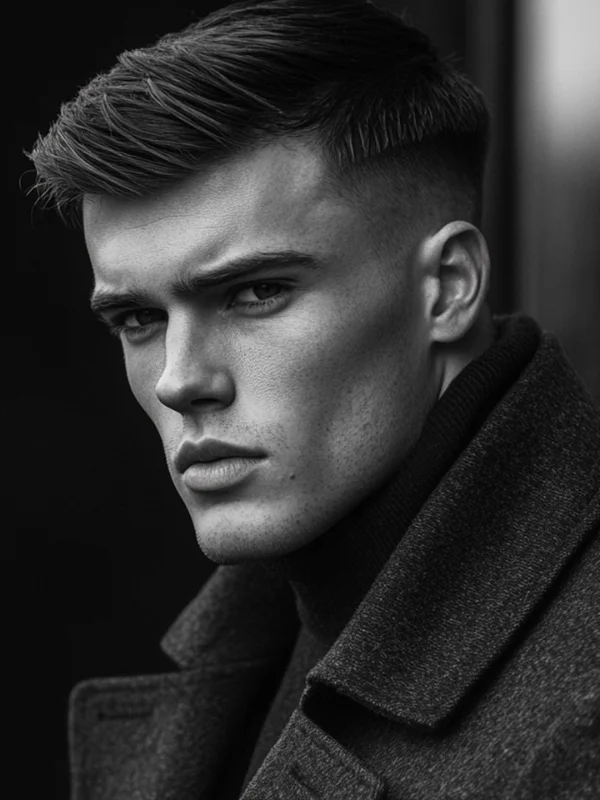
The fade haircut’s story begins in the 1940s, within the strict grooming codes of the U.S. military. Back then, barbers adapted the classic buzz cut and high-and-tight styles into a sharper, more defined look, blending closely shaved sides and back into slightly longer hair on top. The result was clean, practical, and easy to maintain, making it the perfect choice for servicemen. By the 1980s, the fade had left the barracks and found a new identity in urban communities, especially among African American barbers and clients. Inspired by the rise of hip-hop culture, fades evolved into a form of self-expression, featuring varying heights, low, mid, and high, along with skin fades, taper fades, and even intricate hair designs. Iconic styles like Christopher Reid’s high-top fade became pop culture landmarks. In the decades that followed, the fade spread worldwide, embraced by men of all ages, styles, and backgrounds. Today, it remains both a barbershop classic and a cultural symbol, a cut that blends precision, personality, and timeless appeal.
What Is A Skin Fade Haircut?
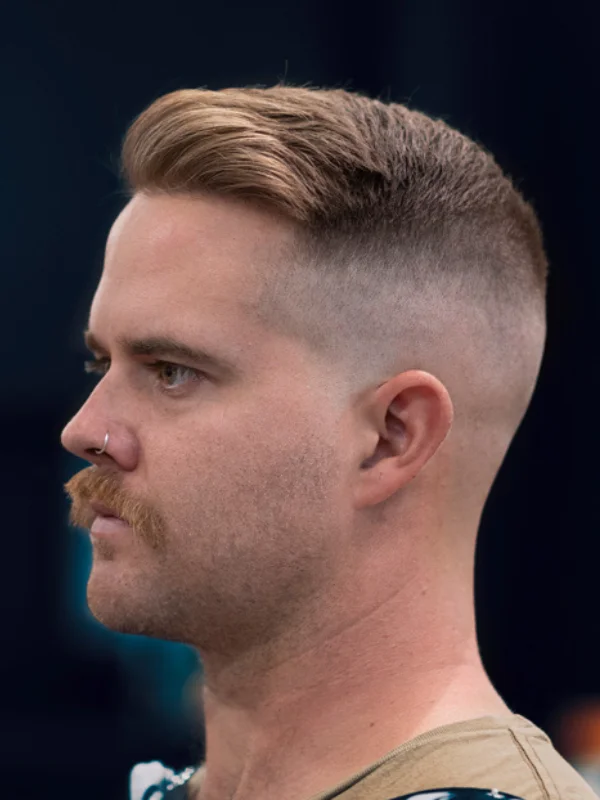
A skin fade is a modern, precision haircut where the hair gradually tapers down until it blends seamlessly into bare skin, ending above the natural hairline. Unlike a taper, which shortens the hair down to the hairline, a skin fade removes the hair completely at its shortest point, creating a crisp, high-contrast look. This style works with a wide range of top cuts from buzz cuts and pompadours to Caesars and mohawks, and can be customized as a low, mid, or high fade depending on how bold you want the finish. The smooth blend and clean edges make it a popular choice for men who want a sharp, standout style that still works for everyday wear.
What Are The Different Types of Skin Fade Haircuts Popular?
A skin fade isn’t a full hairstyle on its own; it’s a cutting technique that can be incorporated into countless men’s styles. The key feature is how the hair tapers smoothly down to bare skin, and the variation comes from where the fade starts and how much skin is revealed. Barbers are pairing skin fades with everything from textured crops to slick pompadours, adapting the height and blend to suit each client’s face shape, hair type, and personal style. Understanding the different skin fade types is the first step to choosing the right one for your look.
Low Skin Fade
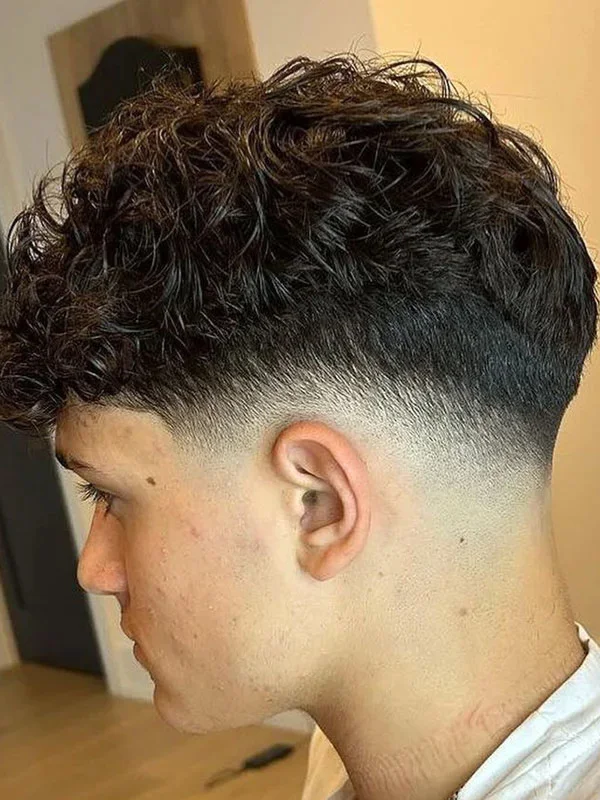
The low skin fade is a refined, contemporary variation that starts just above the ears and blends down to bare skin about an inch or less above the natural hairline. The fade follows the natural curve of the head, keeping skin exposure minimal and consistent around the back. This makes it ideal for clients who want a modern, sharp look without an extreme contrast. It pairs well with styles like a side part, quiff, or textured crop, and can be customized with creative variations such as a temple fade, burst fade, or undercut fade. For the cleanest results, touch up your low skin fade every two to three weeks.
Low Fade
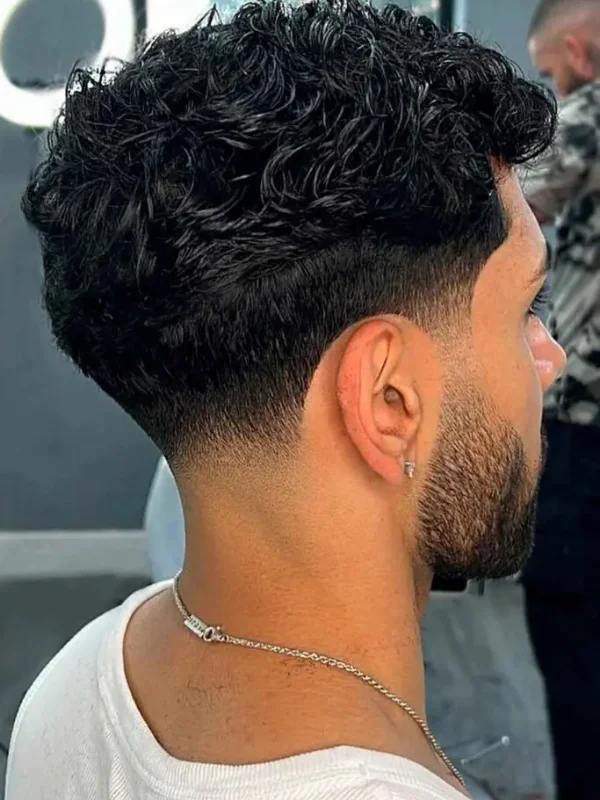
The low fade is a classic, subtle taper that begins near the bottom of the hairline or just above the ears, gradually blending into longer hair on top without fully exposing the skin. This soft transition offers a neat, professional finish, making it perfect for everyday wear and formal settings alike. The low fade works beautifully with timeless styles like a swept-back look or a side part, as well as modern cuts that need a clean foundation. Its understated nature means it requires slightly less upkeep than a skin fade, but a visit to the barbershop every few weeks will keep it looking sharp.
Mid Skin Fade
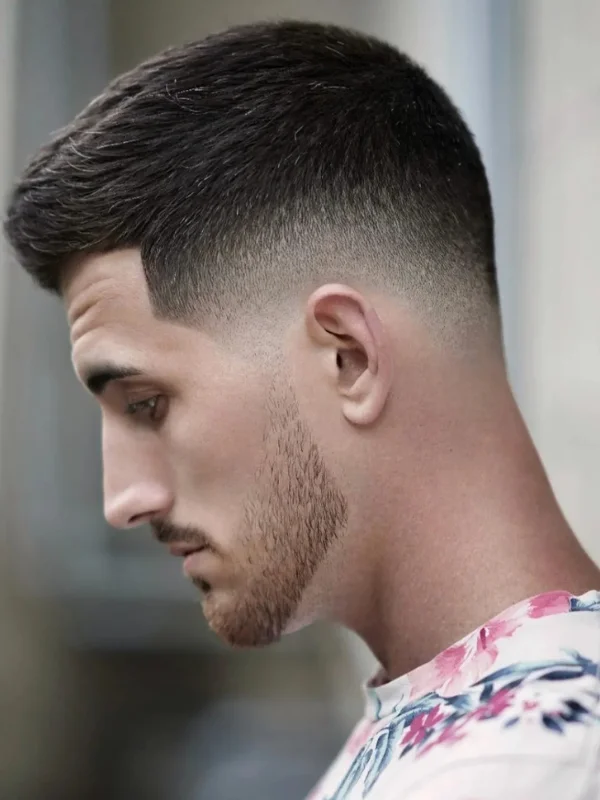
The mid skin fade offers a perfect middle ground between the low and high skin fade, starting around the brow line or middle of the head and tapering smoothly down to bare skin. The fade typically drops slightly behind the ears and at the back, keeping the blend clean and even. This style provides a balanced amount of contrast, more striking than a low fade but less intense than a high fade, making it a versatile choice for both professional and casual looks. The mid skin fade pairs especially well with comb-overs, pompadours, and textured tops, and suits most face shapes, particularly oval and oblong. For extra flair, barbers can adapt it into a drop fade for a curved silhouette or a deep dart fade for sharper definition.
Mid Fade
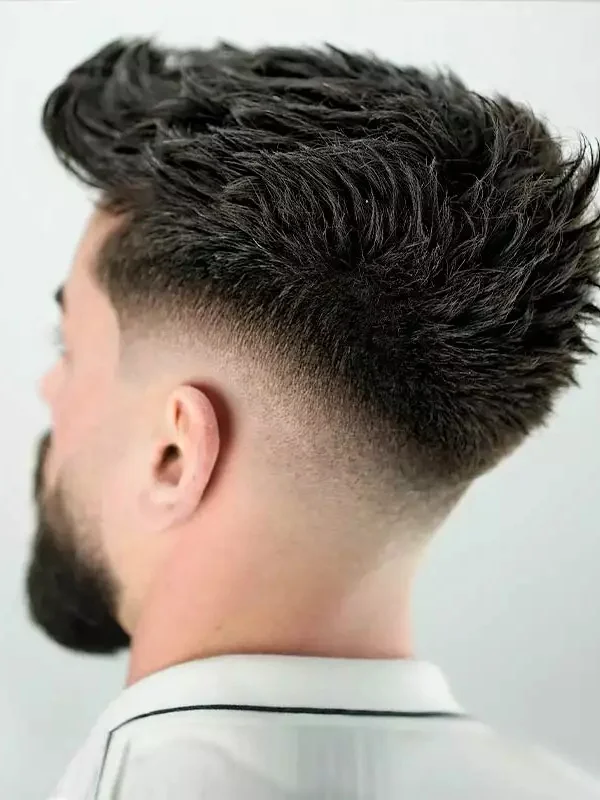
The mid fade is the sweet spot in fade styling, beginning midway up the head or just above the ears and blending into longer hair without fully exposing the skin at lower levels. It combines the low fade’s classic polish with some of the high fade’s bold contrast, giving it a modern yet timeless appeal. This cut works for almost any hair type and face shape, and can be styled sleek with a side part, voluminous with a pompadour, or relaxed with a textured top. Variations like the drop fade or undercut fade can add a unique edge while keeping the balance that makes the mid fade so popular.
High Fade
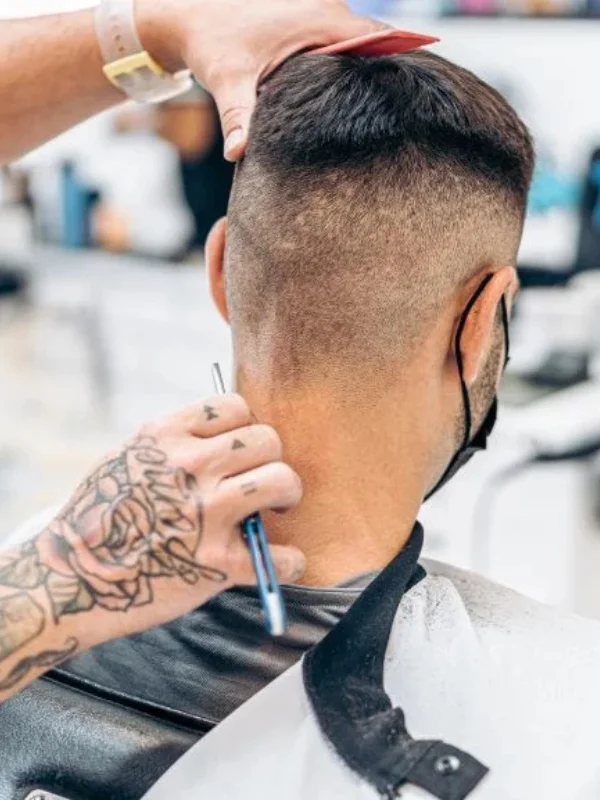
A high fade starts above the temples and tapers quickly, creating a bold, sharp contrast between the sides and the top. The fade runs evenly around the head and can reach close to the crown, making the hair on top appear longer and more prominent, even with shorter styles. This look is modern, edgy, and designed to stand out.
Best Styles: Works well with cropped or textured looks like a quiff, messy top, or even a clean buzz cut. It can highlight strong jawlines and angular features.
Upkeep: Needs regular trims to maintain its crisp, high contrast. A high fade grows out noticeably, so barbershop visits every 1–2 weeks are ideal.
Popular Variations:
- Shadow Fade: A softer blend with a hint of hair for a more subtle finish.
- Buzz Cut Fade: Minimalist and low-maintenance, but still sharp and clean.
High Skin Fade
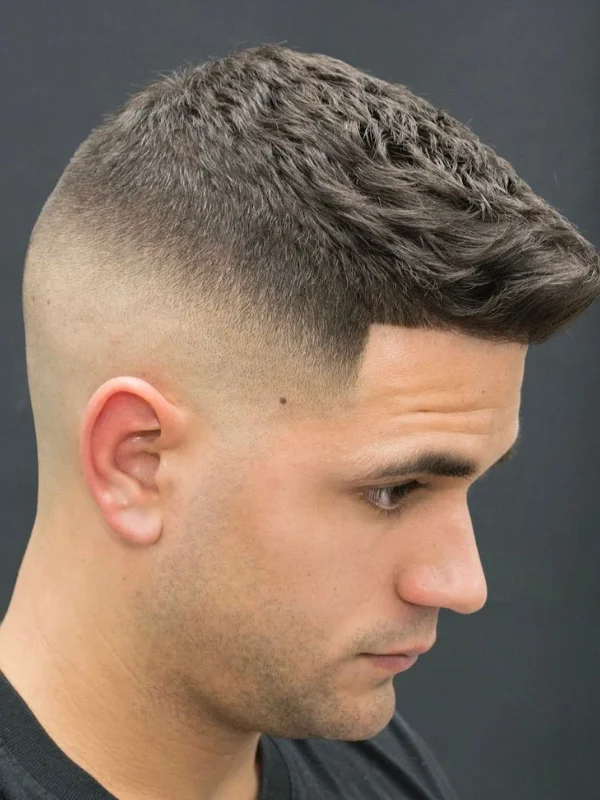
A high skin fade starts around the top of the forehead and quickly tapers down to completely bare skin. The fade runs evenly around the head and almost reaches the crown at the back, creating a sharp, dramatic contrast between the sides and the top. This bold style draws attention to the hair on top, making it look fuller and more defined.
Best Styles: Perfect for short, high-impact cuts like a textured crop, crew cut, or pompadour. It also works with longer top styles for a striking, modern look.
Upkeep: Because the skin is fully exposed, this fade requires touch-ups every 1–2 weeks to stay fresh and clean. Even slight regrowth is noticeable.
Popular Variations:
- High Bald Fade: The cleanest possible version with zero visible hair at the fade line.
- High Fade with Design: Adds shaved patterns or lines for extra personality and style.
Drop Fade
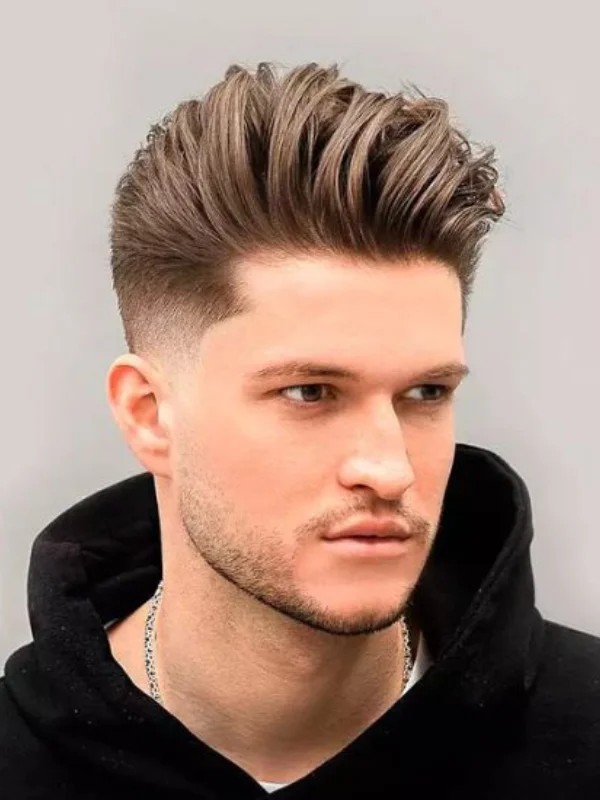
A drop fade is a fade variation where the fade line curves downward behind the ears, following the head’s natural shape. Unlike a high skin fade that stays level all the way around, a drop fade “drops” lower at the back, creating a more rounded and contoured look.
This style works with low, mid, or even high fades on the sides — the key difference is the way the fade slopes toward the nape of the neck. The drop fade adds depth and dimension to the haircut, making it appear fuller and more dynamic.
Best Face Shapes: Great for men with round or wide faces, as the curve of the fade adds balance and structure.
Style Combinations: Often paired with textured crops, curly tops, pompadours, or slick backs. It’s especially popular in Miami and urban barbering trends due to its stylish, customizable finish.
Variation Tip: You and your barber can choose how dramatic the drop will be, from a subtle slope to a bold, noticeable curve.
Temple Fade (Taper Fade)
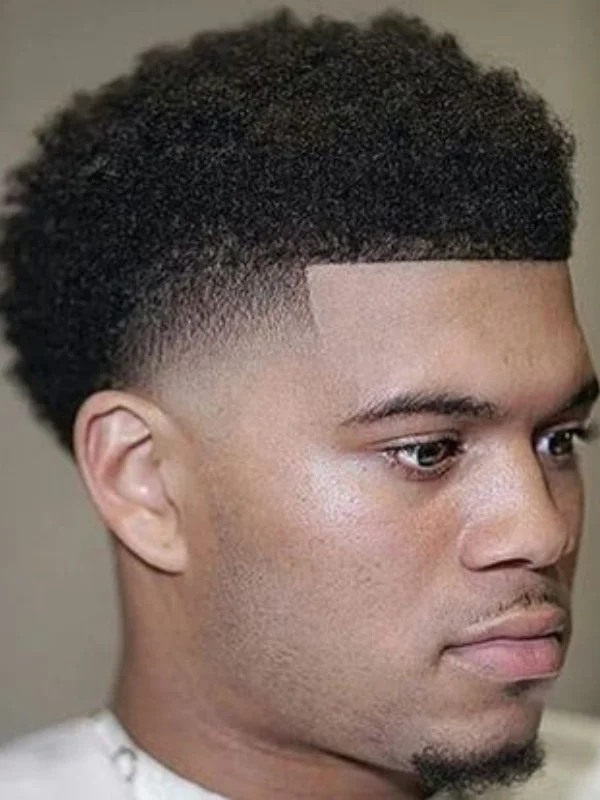
A temple fade, also called a taper fade, is a clean and subtle fade that focuses on the temples and the nape of the neck. Instead of blending the sides fully down to the skin, the fade tapers gradually, leaving more hair length at the hairline. The skin exposure is minimal and can be adjusted to low, mid, or high depending on your preference.
Key Features:
- Fade is visible only around the temples and neckline.
- Keeps the hairline intact behind the ear.
- Offers a softer transition compared to full fades.
Why Choose It:
The temple fade works perfectly for men who want a neat, low-maintenance style with a touch of sharpness. It pairs well with classic cuts like side parts, slick backs, and undercuts, adding just enough detail without being too bold.
Pro Tip: Ask your barber how low or high you want the fade to start, as small adjustments can change the overall vibe from professional to more casual.
Burst Fade
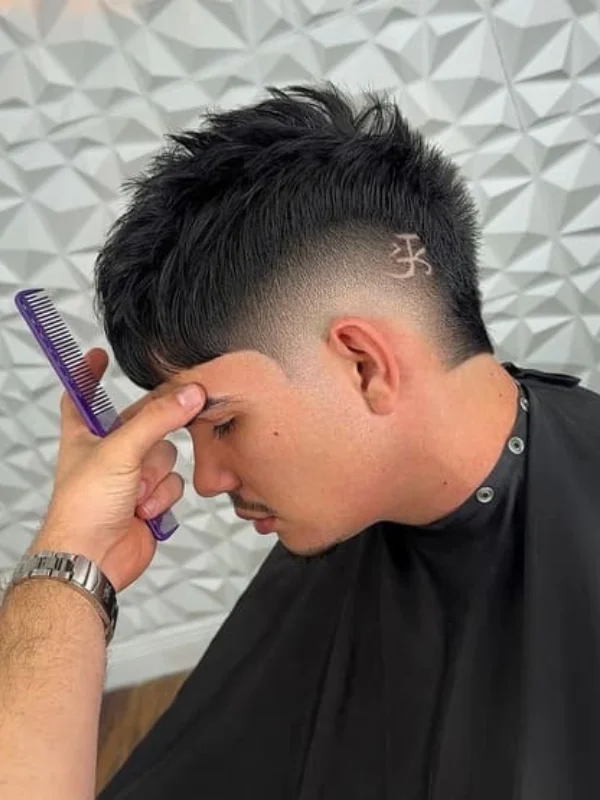
A burst fade is cut in a semicircle shape around the ear, creating a “burst” effect that drops slightly behind the ear and ends at the side of the neck. Unlike low or mid skin fades, it doesn’t continue across the nape of the neck.
Best For: This fade is popular with bold styles like mohawks, faux hawks, and creative haircut designs, as it emphasizes the volume and shape on top.
Maintenance Tip: To keep the semicircle sharp and defined, schedule regular touch-ups, especially if you want the fade to keep its clean, eye-catching look.
Bald Fade

The bald fade is closely related to the skin fade, but takes the contrast a step further. Here, the fade transitions down to completely bare skin at a higher point on the head, looking more intense and visual impact. This variation is perfect for those who want a stronger, edgier cut that turns heads. It pairs well with crew cuts, slick backs, and other polished top styles, but it can also be adapted to more creative looks. By adjusting the height and blend, barbers can make the bald fade suit almost any face shape or hair type while keeping that sleek, ultra-clean finish.
Which Skin Fade Hairstyles Are Trending?
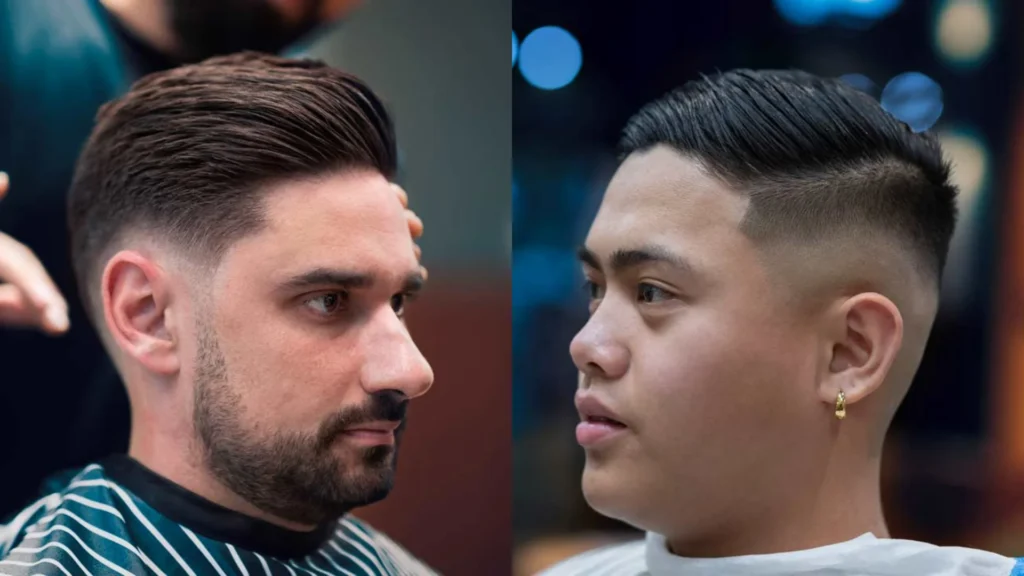
Skin fade hairstyles are evolving with bold, creative twists. One of the biggest trends is the modern mullet, which is making a strong comeback in various styles. Many of these fresh mullet looks feature a burst fade or burst taper fade, giving the haircut a stylish, rounded edge around the ears while keeping the back longer.
The burst taper fade mullet has quickly become one of the most popular modern updates to this old-school classic, offering a perfect balance of retro attitude and contemporary sharpness.
Most Popular Fade Combos Right Now
From barbershop chairs to social media feeds, 2025 is all about pairing fades with statement styles. Here are the top combinations dominating the year:
Skin Fade + Pompadour
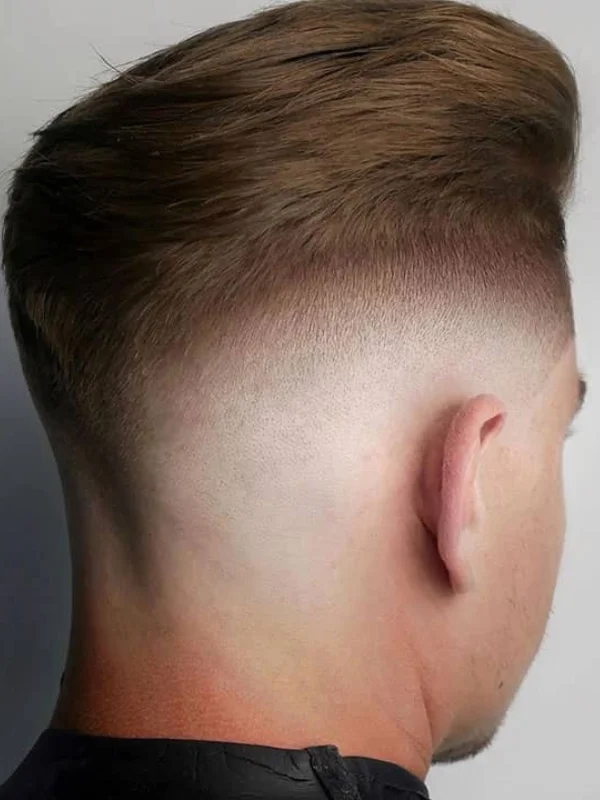
A timeless blend where the voluminous, swept-back top meets ultra-clean, razor-sharp sides.
Drop Fade + Curly Top
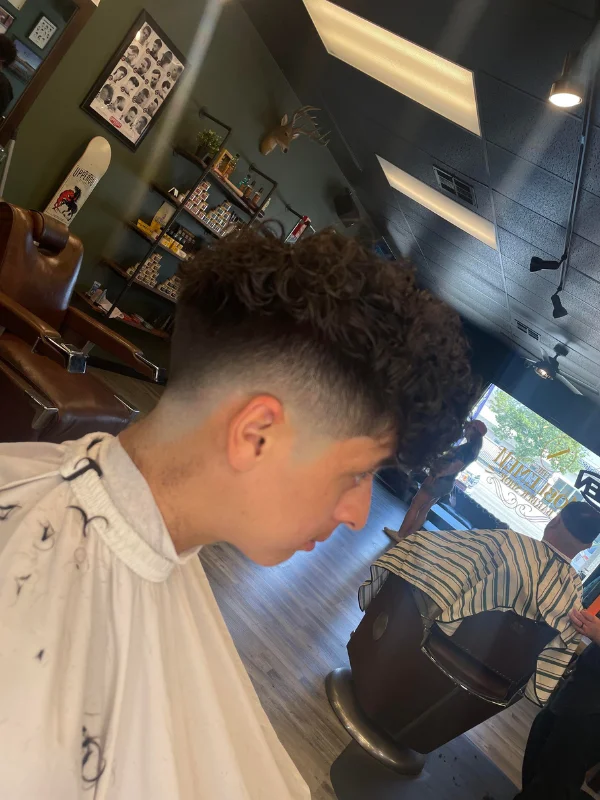
Natural curls get extra definition with a low, flowing fade that drops at the back.
Mid Fade + Buzz Cut
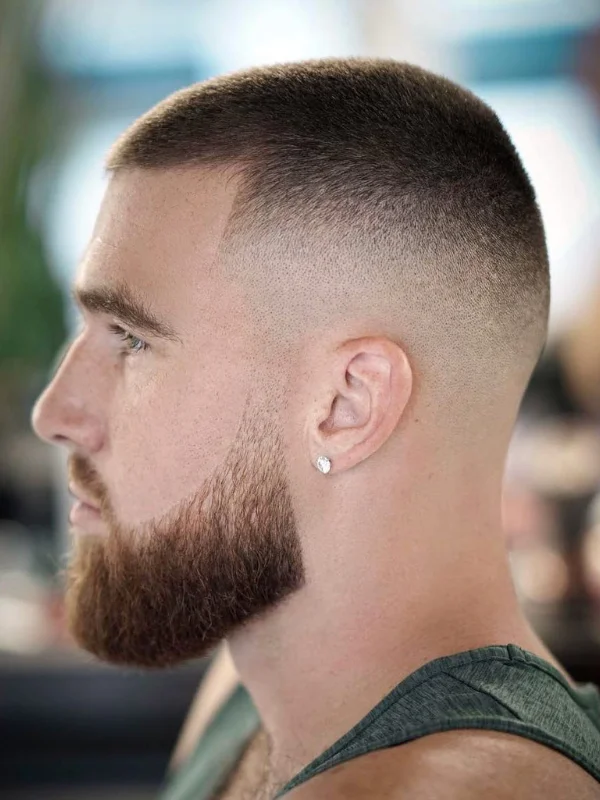
Sleek, simple, and incredibly low-maintenance while still making a bold impact.
Temple Fade + Afro
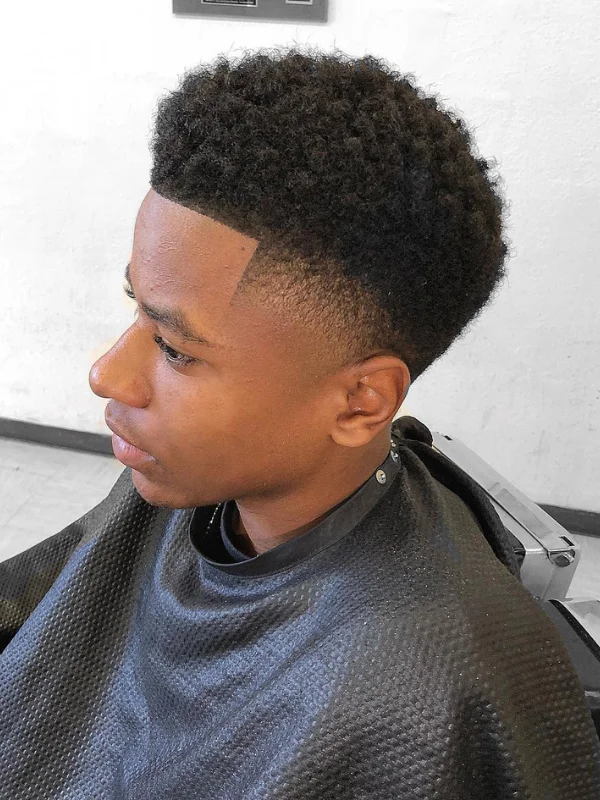
The perfect balance of soft, natural volume and precise, detailed taper work around the temples.
Choosing the Right Fade for You
The perfect fade isn’t just about following trends—it’s about finding a style that complements your face shape, suits your lifestyle, and matches how much time you’re willing to spend on styling.
Quick Fade Guide:
- Short on time? Go for a Buzz Cut + Mid Fade – low-maintenance and always sharp.
- Curly or thick hair? A Drop Fade or Burst Fade keeps natural texture under control while staying stylish.
- Want to stand out? High Skin Fades or Burst Fades deliver maximum impact.
- Need a work-appropriate look? A Low Skin Fade or Taper Fade paired with a neat crop is clean and professional.
Fade Maintenance Tips
A great fade, especially a skin fade, can start losing its crisp edges in just two weeks. To keep it looking sharp and fresh:
- Book touch-ups every 2–3 weeks to maintain the clean blend.
- Moisturise your scalp to prevent dryness in areas where the cut is extra close.
- Choose the right styling product for your hair type, matte clay for control, sea salt spray for texture, pomade for shine.
- Be specific with your barber about the fade height, blend, and finish you want.
- Bring a photo reference it removes all guesswork.
Wrap Up: Skin Fades
Skin fades aren’t just a style, they’re a modern grooming essential. Whether you’re trying something new or staying loyal to your signature look, knowing the different fade types keeps your style game strong.
We’ve perfected the fade customised to your face shape, hair type, and personal vibe. Walk in, relax, and walk out looking like the sharpest version of yourself.
Frequently Asked Questions
What’s the difference between a skin fade and a taper?
A taper gradually shortens the hair toward the neckline, leaving some hair at the bottom. A skin fade goes right down to the skin, usually ending above the natural hairline for a sharper, cleaner contrast.
Which skin fade should I choose low, mid, or high?
It depends on your style and comfort. A low skin fade is subtle and professional, a mid skin fade balances modern and classic, and a high skin fade creates bold contrast for a trendier look.
Are burst fades and drop fades the same?
No. A burst fade curves around the ear and ends at the side of the neck, while a drop fade dips down at the back of the head along the natural hairline.
Is a skin fade suitable for all hair types?
Yes, but the technique varies. Skilled barbers adjust the fade for straight, wavy, curly, or thick hair to ensure the best look.
How often should I maintain a skin fade?
Every 2 to 3 weeks is ideal to keep the fade sharp and well-blended. Regular touch-ups help maintain the clean, fresh style.







